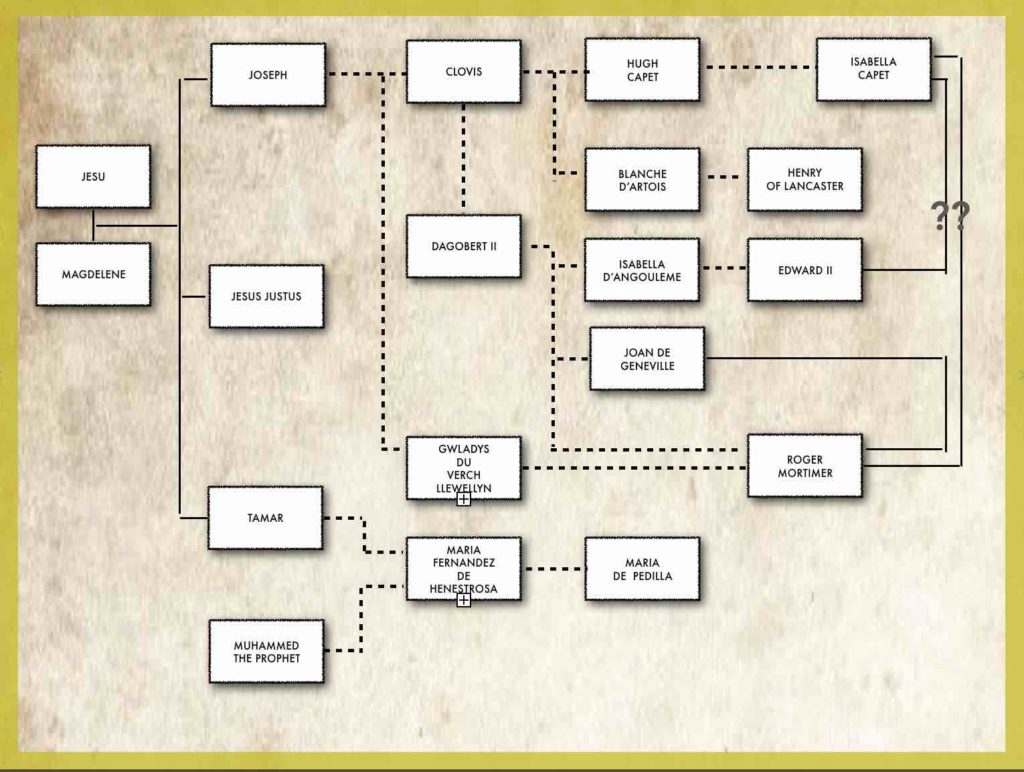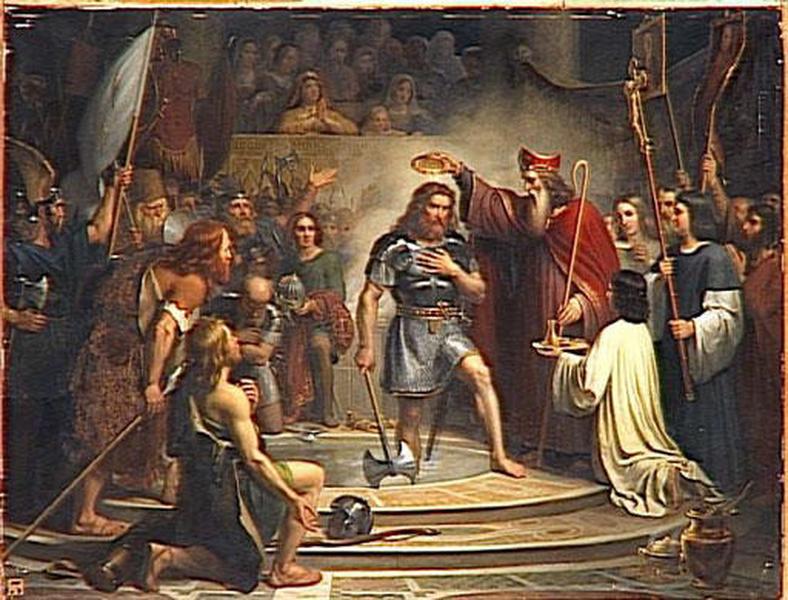
To understand the factors at work affecting King Edward and his ambitions to claim the Frankish throne it is necessary to review the role genealogy was playing in the fourteenth century.
In the fourteenth century there was a belief that the “right to rule”, had been ordained by God and that all rightful kings were descended from Jesus. This belief originated in the raising of Clovis of the Franks to the position of King during the fall of the western European empire. Onlookers at the time looked at the appointment with disbelief, surely there had to be some special reason for Clovis’ appointment?
In 486, Clovis, the teenage leader of a minor tribe, was given the approval of Felix, Bishop of Rome, to take control of the Western Roman Empire. The dynasty Clovis founded lasted for four hundred and fifty years. Much of his success was due to the extraordinary support he received from the Bishops of Rome.
There were other more obvious candidates.
Nevertheless, Clovis’ approval carried over to a third and fourthPope, Anastasius and Symmmachus. It must be concluded that the Church of Rome, even at this early date, wanted to separate from Eastern Roman Empire and of course, the Orthodox Christian faith.
They did not want this motivation to become public knowledge, so they looked for a different explanation. Ultimately the alternative explanation became common knowledge. No one is really sure whether it originated with Clovis himself, his advisors or the Church but it was generally accepted.
It was explained that Clovis was descended from Jesus and therefore had the right to rule. This was never specifically denied by the Church of Rome and was actively encouraged by Clovis’ Merovingian descendants.
The descent from Jesus, as described in the rapidly constructed “genealogies” was in itself largely mythical, involving visits of the holy family to Britain, intermarriage with local rulers and the bloodline then passed through the “Fisher Kings” who dwelled in the “wastelands” and finally to the Merovingians, Clovis ancesters.
Despite the improbability of these “genealogies” those who wished to establish their right to rule scrambled over each other to prove they were descended from Clovis.
It would appear these theories of messianic descent were first formally documented in the 10th century.
It is also claimed that they are echoes of the same stories in the British/Welsh histories, from a much earlier time, perhaps concurrent with the rise of the Franks.
 A very small number were able to establish a direct descent from Clovis most notably Hugh Capet who became king of the Franks .
A very small number were able to establish a direct descent from Clovis most notably Hugh Capet who became king of the Franks .
Hugh Capet was elected as king of the Franks in 987 because he of greater nobility than the other candidates—that he could prove his descent from Clovis .
The various families argued about the legitimacy of the various lines of descent. The full details have been covered in several books including Holy Blood, Holy Grail by Michael Baigent, Richard Leigh and Henry Lincoln and The Bloodline of the Holy Grail by Laurence Gardiner and in even more detail on the website fabpedigree.com
It is also claimed that there are echoes of the same stories in the British/Welsh histories and it is proposed that the the Welsh messianic line is every bit as credible as the descent leading to Clovis.
In 1355, no one family could claim all three lines, but a child of Isabella and Roger Mortimer would indeed have made this possible.
incredibly there is another line of messianic descent, this time a purely female line from Jesus and Magdalen’s daughter Tamar.
This line also incorporates a purported descent from the prophet Mohammed. This line was claimed and documented by Fredrich II Hohenstaffen the Holy Roman emperor who spent most of his life in conflict with the Church of Rome. Another beneficiary of this bloodline was Maria Padilla ,mistress then wife of King Pedro II of Castile the mother of Isabella Perez and Constance Pedra.
